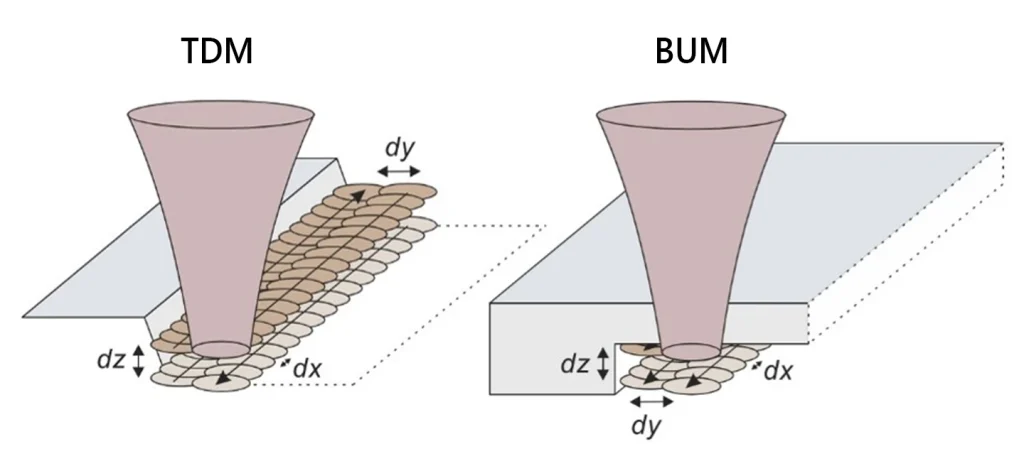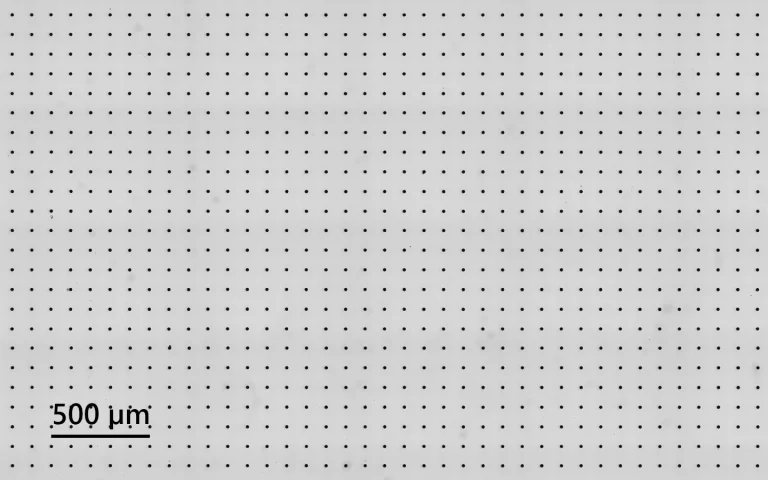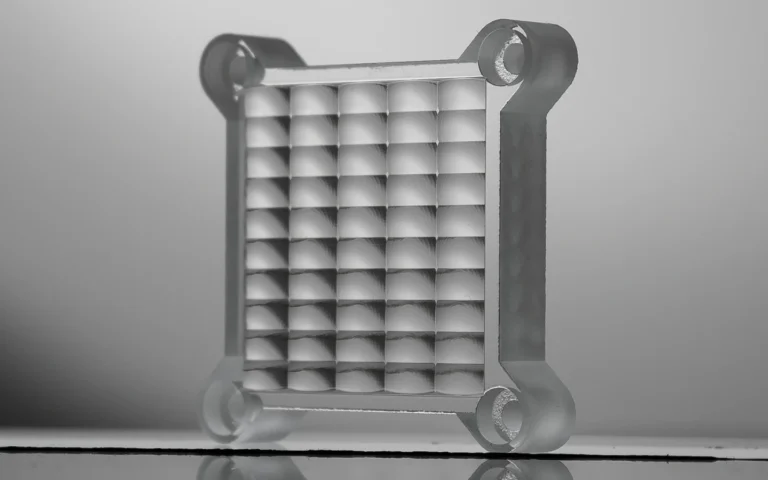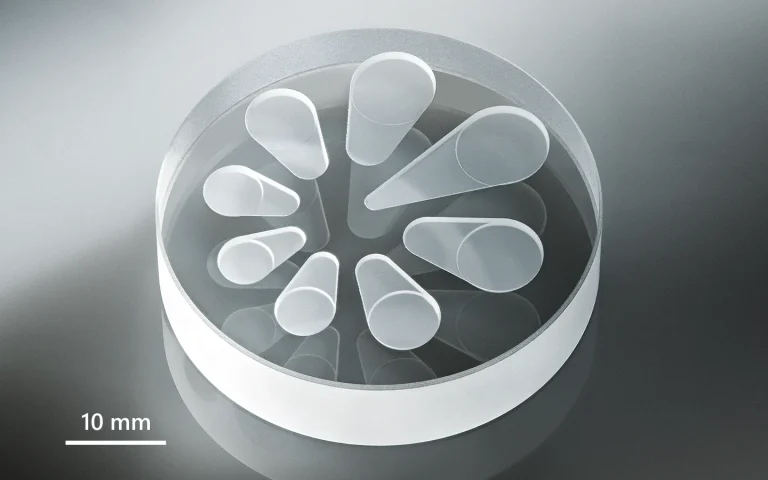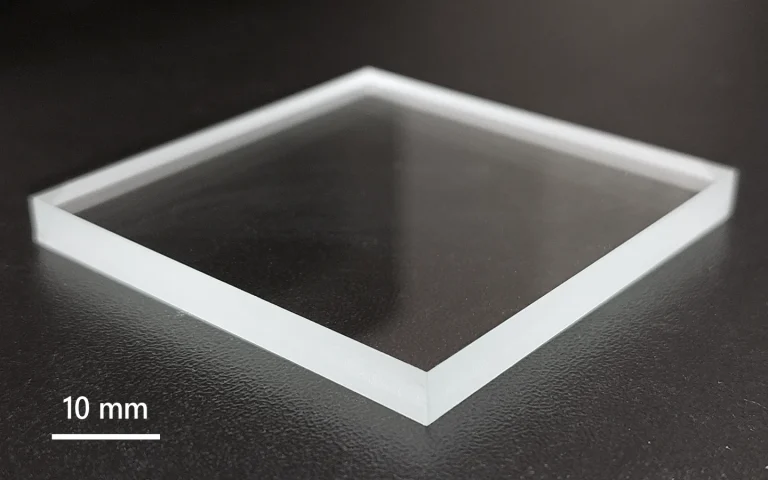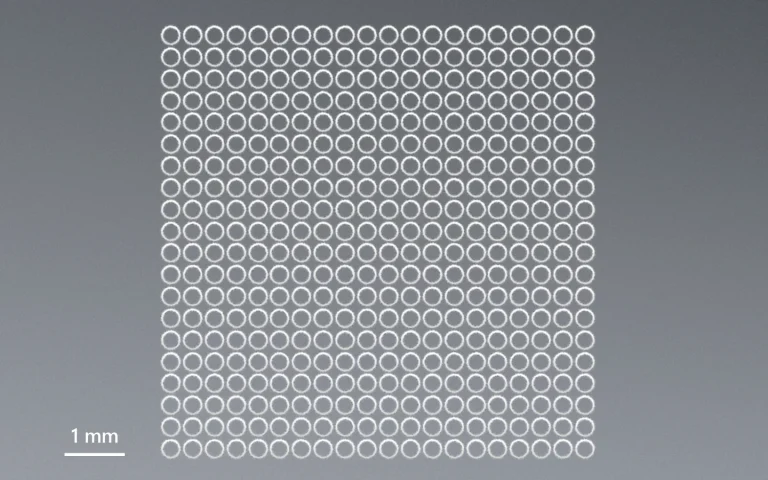Processing of glass
The femtosecond laser micromachining technique has brought transparent materials processing to the next level. Complex structures can now be precisely fabricated by selectively removing material through drilling, cutting, and milling.
Bottom-up milling of glass
Conventional laser milling strategy struggles to achieve high aspect ratio geometries, as ablation debris accumulates within the ablation area, preventing further material removal and resulting in saturation of ablated depth. Alternatively, in the bottom-up milling technique, the laser beam is focused at the bottom of a sample. This method allows all ablation products to be removed through the backside of the sample, enabling the formation of high aspect ratio geometries in glass.
FemtoLux 30 GHz burst function was combined with bottom-up milling to achieve high process throughput rates. With precise and flexible control of the burst energy and no. of pulses in theburst, it is possible to precisely control the thermal stress generated in the glass substrate. With correct parameters, the material removal process switches to laser induced material fracture and glass particles are being removed in a particle form. In result, with 25 pulses in GHz burst it is possible to achieve material removal rates of 600 mm3/min. The bottom-up milling strategy not only excels in high throughput rates, but also offers zero-taper capabilities of forming various holes and channels with depth reaching of tens of millimeters.
